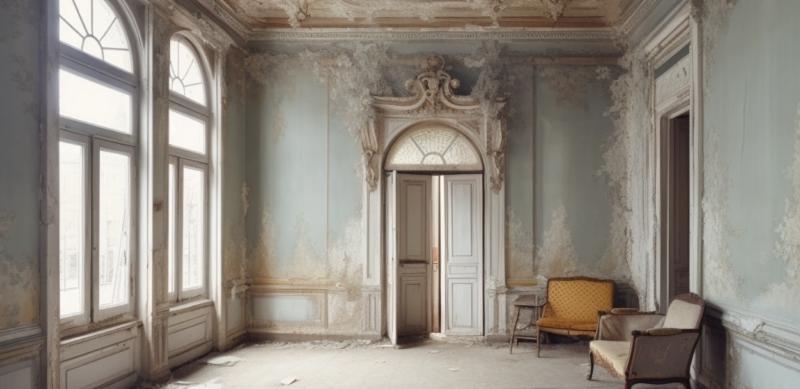The Trade and Tradition of Plastering: A Not-So-Smooth Journey

A Brief History of PlasteringPlastering, the noble art of turning a lump of wet, gooey substance into a smooth and level surface on a wall or ceiling has been around for centuries. The ancient Egyptians, who never seemed to do anything in half measures, had a particular fondness for plastering, and some of their work, like the Pyramids and the Sphinx, can still be admired today. The ancient Greeks and Romans were also partial to a bit of plastering, as evidenced by the many frescoes that have survived the ravages of time and enthusiastic archaeologists.
From Lime to Gypsum: A Sticky EvolutionOriginally, lime was the go-to choice for plastering. Made from crushed limestone, it was heated and then mixed with sand and water to create a thick, workable paste. The trouble with lime is that it takes a very long time to set, which is fine if you're an ancient Egyptian with a century-long deadline for your pyramid, but not so good if you're a modern plasterer with a mortgage to pay.
Thankfully, gypsum eventually took over as the plasterer's material of choice. Gypsum is a naturally occurring mineral that has the rather extraordinary ability to be ground into a fine powder, mixed with water, and then set rock hard in a matter of hours. Gypsum plaster is also more environmentally friendly, as it can be produced at a lower temperature and doesn't release carbon dioxide when setting, unlike lime. So, not only did the plasterers of yesteryear save time, but they also saved the planet. Sort of.
Tools of the TradePlasterers may appear to be performing some sort of alchemy as they transform a bucket of slop into a pristine wall, but it's actually all down to skill and a few essential tools:
- Trowel: The plasterer's best friend, this flat, rectangular piece of metal with a handle is used for applying and smoothing the plaster. A true plasterer can wield a trowel with the precision of a surgeon and the grace of a ballerina.
- Hawk: Not to be confused with the bird of prey, a hawk is a square platform with a handle underneath, upon which a quantity of plaster is placed for easy access while working. Every plasterer has their own preferred size and weight of hawk, much like a wizard and their wand.
- Float: A float is a smaller, more flexible version of a trowel that is used for finishing touches and to work the plaster into the nooks and crannies that a larger trowel can't reach. A float is to a plasterer what a scalpel is to a surgeon or a toothpick to a dental hygienist.
- Bucket: A good, sturdy bucket is essential for mixing the plaster and transporting it to the work area. The humble bucket is the unsung hero of the plastering world, without which, plastering would descend into chaos and anarchy.
Plastering Techniques: A Smoothing SymphonyThere's more to plastering than just slapping some wet stuff on a wall and hoping for the best. The process involves several stages, each of which requires its own unique set of skills and techniques:
- Preparation: Before the plastering can begin, the surface to be plastered must be prepared. This may involve removing old plaster, cleaning and dusting, and applying a coat of PVA glue to improve adhesion. It's not the most glamorous part of the job, but as any good plasterer will tell you, failing to prepare is preparing to fail.
- Application: The plaster is applied to the wall or ceiling in a series of quick, deft strokes, a bit like a chimpanzee painting the Sistine Chapel. The aim is to achieve a smooth, even layer of plaster, with no lumps, bumps, or voids. This is easier said than done, and a true master of the art can make it look deceptively simple.
- Finishing: Once the plaster is on the wall, the real work begins. Using a combination of trowel and float, the plasterer will work the material until it is silky smooth and as flat as the Earth (according to some misguided individuals). This takes time, patience, and a keen eye for detail, as well as a certain amount of arm strength and stamina.
- Drying: Finally, the plaster needs to dry thoroughly before it can be painted or otherwise decorated. This can take anywhere from a few hours to several days, depending on the thickness of the plaster and the ambient conditions. During this time, the plasterer can sit back, relax, and plan their next masterpiece.
Plastering: A Labor of LovePlastering may not be the most glamorous or high-profile profession in the world, but it's an essential part of the building process that takes skill, dedication, and a certain degree of artistry to master. So, the next time you find yourself admiring a perfectly smooth and level wall, spare a thought for the humble plasterer who made it all possible – they're the true unsung heroes of the construction world.
|
|







